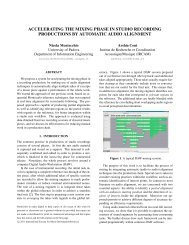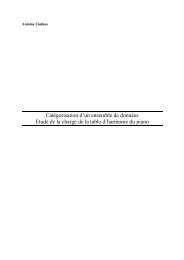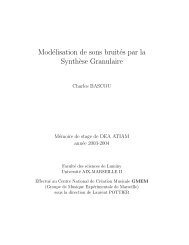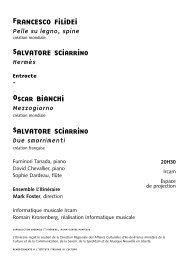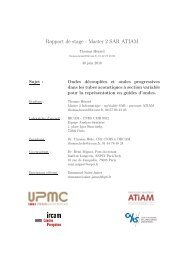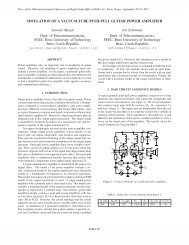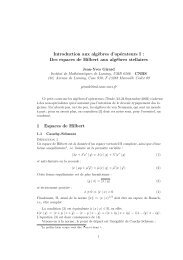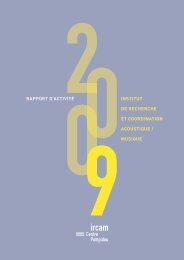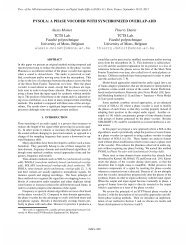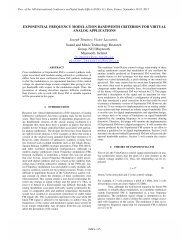Conception des modèles d'observation audio temps réel à l ... - atiam
Conception des modèles d'observation audio temps réel à l ... - atiam
Conception des modèles d'observation audio temps réel à l ... - atiam
- No tags were found...
Create successful ePaper yourself
Turn your PDF publications into a flip-book with our unique Google optimized e-Paper software.
AbstractMusical interaction between a human and a synthetic performer firstlyrelies on the machine’s ability to "listen" to the sounds made by the humanperformer. In order to reach this goal, real-time <strong>audio</strong> observation models likethe one in Ircam’s score follower use <strong>audio</strong> <strong>des</strong>criptors and a classification algorithmto segment the signal as the human performer plays. There are many<strong>audio</strong> <strong>des</strong>criptors and there relevance depends on the considered classificationproblem, which leads to the problem of feature selection : which onesshould be used for a given segmentation problem ? Usual feature selectionalgorithms are problematic regarding real-time applications since they don’tlet the user master the amount of calculation needed to compute the selectedfeatures’ values.In this document, we present classical feature selection algorithms, andstress the issues related to their use in the context of real-time applications.Then, we propose two approaches meant to integrate the features’ computationalmodel to the selection process. The first method is naive and relies onthe use of filter methods. The second is based on a search taxonomy derivedfrom the features’ computational model and on an exploration of the searchspace.Finally, we give the results of our evaluation of the two proposed approaches.They confirm the validity of our initial observations regarding classicalfeature selection techniques, and tend to show the usefulness of the secondsuggested approach.



